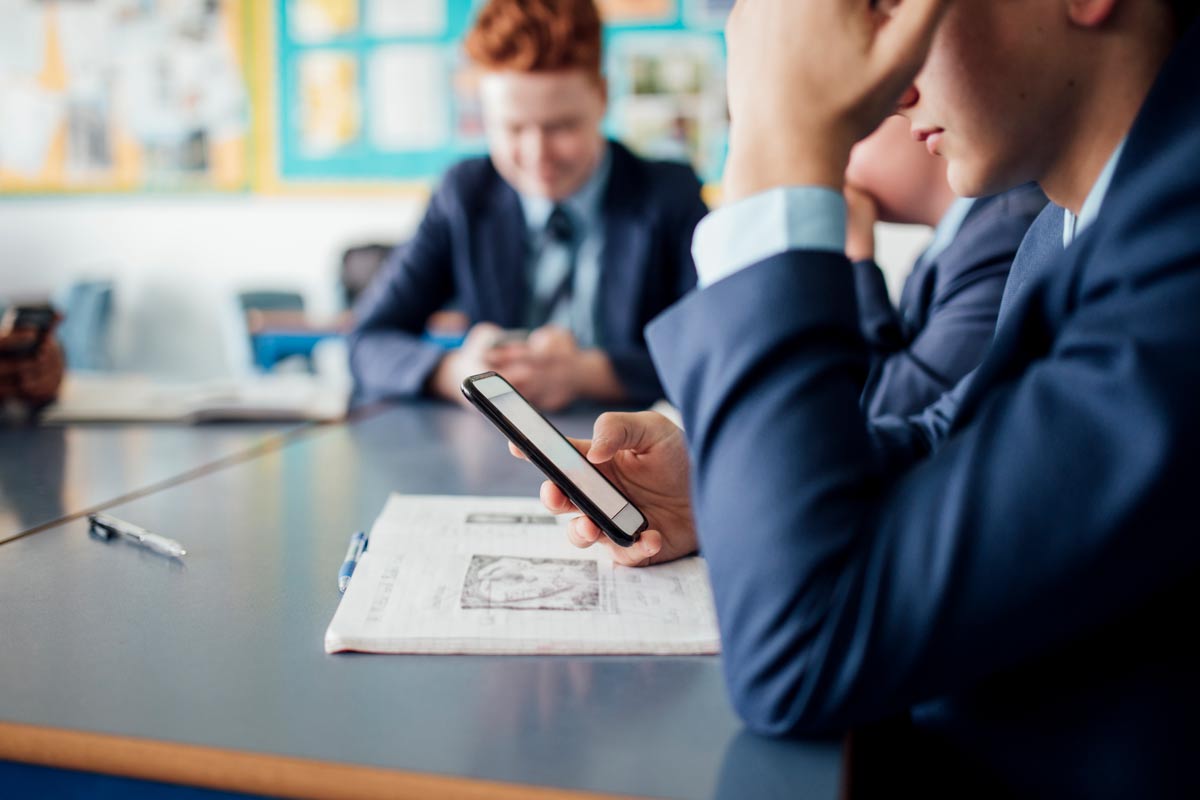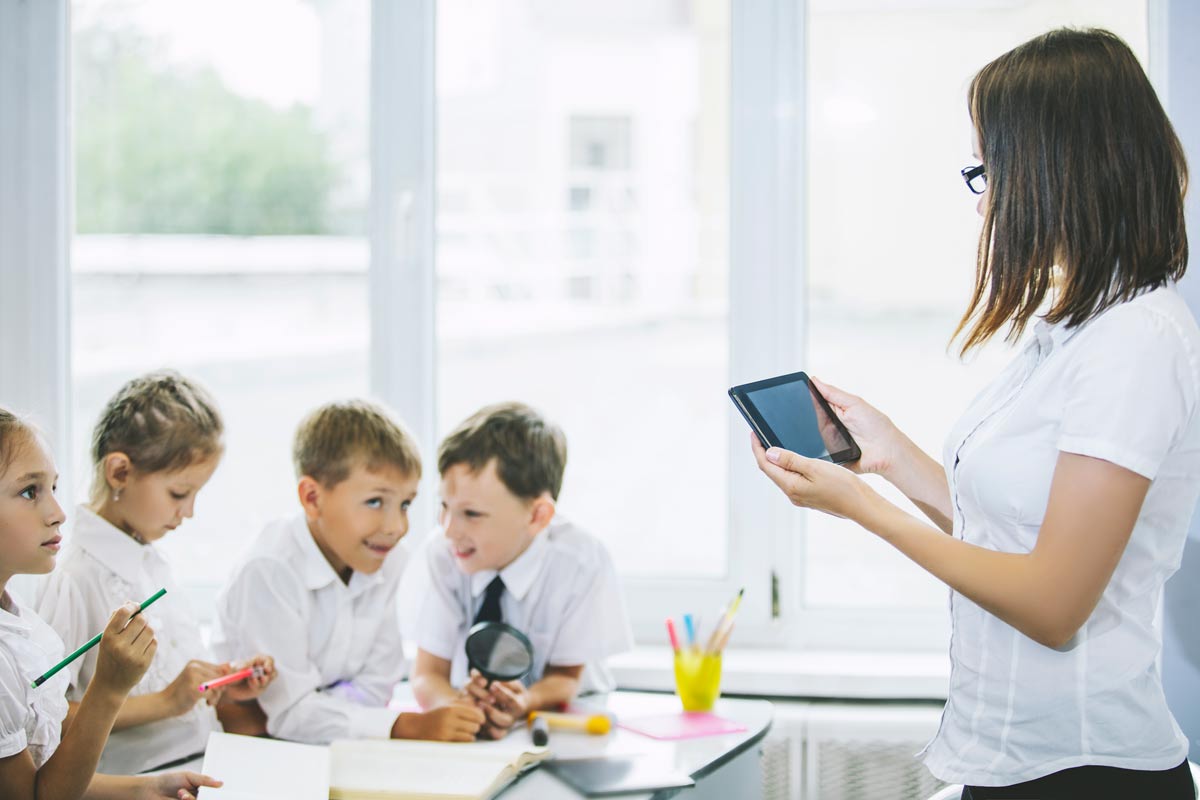How does the mobile phone ban affect UK schools?
Unveiling a bold initiative to cultivate undistracted learning environments and elevate classroom decorum, the UK government has declared a revolutionary ban on mobile phones in schools throughout England. This move not only signals a commitment to addressing the pervasive challenges posed by digital distractions but also underscores a pivotal shift towards fostering conducive learning spaces for the nation's students.
As we confront the ubiquity of mobile phones among the younger generation—with a staggering 97% of twelve-year-olds 1 wielding these technological marvels—the real question looms: will this prohibition genuinely reshape the landscape of current school protocols?

While the impact on primary schools might seem tempered by the lower prevalence of phone ownership among younger pupils, the nuances of the matter cannot be overlooked. Even in the realm of primary education, the presence of mobile phones, particularly among some Year 6 students navigating their way to school, paints a nuanced picture. Recognising the potential influence of early exposure, implementing stringent policies at the primary level becomes an instrumental step in sculpting positive habits and norms around technology use, laying a robust foundation as students traverse the corridors of secondary education.
Mark Dakin, the esteemed Head Teacher at St Giles’ Church of England Primary School, adds a poignant perspective: “I don’t think the news really affects Primary schools, generally speaking, due to the nature of the children’s age range. We do, however, find some children in Year 6 have mobile phones for keeping in touch with parents on their school journey. I think this news would affect Secondary school settings more!”
In essence, the ban on mobile phones in schools emerges as not just a policy but a transformative leap towards reshaping the educational landscape, steering it towards focused, engaged, and technology-aware learning spaces for the future.
Mobile Phone management within schools
Now let’s consider three compelling solutions that empower educators to effectively manage the pervasive influence of these devices in the learning environment.
-
No Mobile Phones on School Premises: By mandating students to either leave their phones at home or entrust them to their parents, this straightforward rule establishes a crystal-clear boundary. Any mobile phone discovered within the school premise becomes a breach of policy, leaving no room for ambiguity and ensuring unwavering compliance.
-
Handed In or Stored in a Locked Container: By having teachers or designated staff members oversee the locked containers, students regain access to their devices before and after school, mitigating disruptions during precious class time.
Mark Dakin asserts, “With our Year 6 children, if they have mobile phones, they are expected to hand them in to their teacher and they get them back at the end of the day.”
Nathan Southall, Director of IT, Systems Innovation & Digital Strategy, describes the approach at Edgbaston High School for Girls, “We have the students lock their mobile phones away in a secured locked box, with foam padding inside, and the form tutor would store the locked box in a separate room, like the staff room. The students would then get their mobile phones back after the afternoon lesson.”
-
Never Used, Seen, or Heard: Students would be required to power off their phones and store them in bags throughout the day, with any violation resulting in immediate confiscation. This approach fosters a culture of discipline, where the consistent enforcement of the policy discourages students from engaging with their mobile phones during crucial school hours.
Technology in the Classroom
While mobile phone usage in the classroom is being phased out, technology in itself is becoming ever-more important as a learning tool. In the dynamic landscape of collaborative learning and the era of flipped classrooms, the integration of school-owned tablets, iPads and laptops during lesson time emerges as not just beneficial but essential.
-
Facilitating Collaborative Learning: Whether through interactive exercises, real-time discussions, or group projects, these devices become conduits for a more interactive and participatory learning experience.
-
Diverse Device Solutions: From Android Tablets to Apple iPads and Windows Laptops, these devices offer a versatile toolkit for educators, ensuring that the technology aligns seamlessly with the curriculum and teaching objectives.
-
Screen-sharing and Research: They serve as platforms for screen-sharing, enabling educators to showcase content and concepts dynamically. Additionally, these devices facilitate research, empowering students to delve into the wealth of information available at their fingertips.
-
Tailored Learning with Digital Worksheets: One of the standout advantages lies in the ability to share differentiated digital worksheets among students with varying abilities.
-
School-Managed Devices: These devices can be seamlessly managed through the school's Management Information System (MIS), ensuring a streamlined and organised approach to technology integration.
In essence, the uptake of technological devices within the classroom transcends mere technological adoption; it symbolises a paradigm shift in education, where innovation becomes a cornerstone for an enriched and interactive learning journey.

As schools invest in these transformative tools, they pave the way for a future where education is not just disseminated but experienced in its fullest, most dynamic form.
Therefore, does the mobile ban announcement affect current school protocols? Nathan Southall says: “The intention is right but I’m not sure what the impact would be now, as many places already have provisions and protocols in place to manage mobile phone usage in schools. I suppose it’s a bonus for schools that could lean on this time to make internal changes to existing policies if they’re in need of review.”
Interactive Education Solutions
The integration of laptops and tablet-based technology introduces a dynamic dimension to classroom dynamics. Through innovative teaching methods, educators can captivate students' attention, fostering a more interactive and participatory learning environment.
Interactive Education Solutions specialises in such devices to help teachers maximise engagement within the classroom.
Our dedicated team stands ready to offer insights, recommendations, and personalised strategies to ensure that teachers harness the full potential of these devices within their unique classroom settings.
For those ready to explore the transformative potential of mobile devices in education, Interactive Education Solutions stands as a trusted partner, paving the way for a future where classrooms become hubs of interactive, immersive, and effective learning.
To connect with a specialist and unlock the possibilities within your classroom, you can get in touch with a specialist, here: call 01902 422 300 or email us.
1 Children and Parents: Media Use and Attitudes 2023 (ofcom.org.uk)
